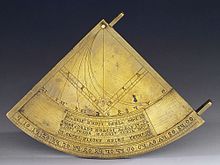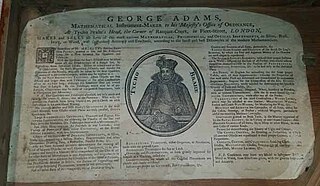
George Adams was an English instrument maker and science writer. His son George Adams, who carried on the business, was also known as an instrument maker and optician.

Museo Galileo is located in Florence, Italy, in Piazza dei Giudici, along the River Arno and close to the Uffizi Gallery. The museum, dedicated to astronomer and scientist Galileo Galilei, is housed in Palazzo Castellani, an 11th-century building which was then known as the Castello d'Altafronte.

Aristodemo Costoli (1803–1871) was an Italian sculptor who spent his entire career in the city of Florence. He is also known for attempting in 1843 to clean and conserve the famed Renaissance-era sculpture David by Michelangelo; unfortunately his hydrochloric acid cleaning solution removed the stone's waxy protective coating and left the surface pitted and porous. His students included Emilio Zocchi, Girolamo Masini, Augusto Rivalta and his son Leopoldo Costoli.

A quadrant is an instrument used to measure angles up to 90°. Different versions of this instrument could be used to calculate various readings, such as longitude, latitude, and time of day. Its earliest recorded usage was in ancient India in Rigvedic times by Rishi Atri to observe a solar eclipse. It was then proposed by Ptolemy as a better kind of astrolabe. Several different variations of the instrument were later produced by medieval Muslim astronomers. Mural quadrants were important astronomical instruments in 18th-century European observatories, establishing a use for positional astronomy.
Paolo Galluzzi is an Italian historian of science.
Christoph Schissler was a German builder of high precision scientific instruments.
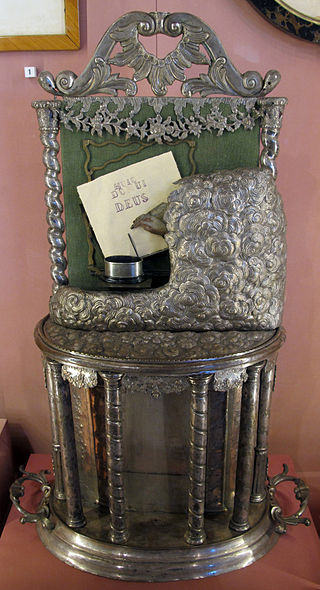
The writing hand is a mechanical automaton created by Friedrich von Knauss in 1764. A clockwork mechanism moves a hand which dips a pen into an inkstand and writes the phrase "Huic Domui Deus / Nec metas rerum / Nec tempora ponat" on a small card. On the silver-coating of the mechanism are the words "Pro patria".

The jovilabe is a brass scientific instrument, undated and of unknown maker, currently in the collection of the Museo Galileo in Florence, Italy.

Galileo's objective lens is a specific objective lens held in the Museo Galileo, Florence, Italy. It was used by Galileo Galilei in the Galilean telescope with which he discovered the four largest moons of Jupiter in 1610. The lens has a diameter of 38mm and a gilt brass housing. The frame is made of ebony and ivory and has dimensions of 410mm x 300mm.
The Campani compound microscope is a microscope on exhibit at the Museo Galileo in Italy, thought to have been built by optical instrument maker Giuseppe Campani in the second half 17th century. For a time it was thought to have been built by Italian scientist Galileo Galilei but no longer bares that attribution.
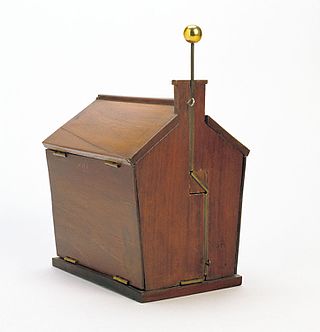
The thunder house is a scientific model invented by James Lind which gives a spectacular demonstration of the destructive effect of a lightning bolt striking a house with an imperfect lightning conductor.

The Instrument of the Primum Mobile is also called the quadrant of Petrus Apianus, because he invented it and described it in the treatise Instrumentum primi mobilis. The instrument is used to find sines and cosines. It bears the initials "F.E.D.P.F." [Frater Egnatius Dantis Predicatorum Fecit]. Ignazio Danti dedicated it to Cosimo I de' Medici, as attested by the Medici coat of arms engraved on the front. The instrument was depicted on the ceiling of the Stanzino delle Matematiche in the Uffizi Gallery.

The Tabula Affinitatum is a table of chemical affinities between substances.

The tall-stem thermometers are a kind of thermometer, resting on branched feet.
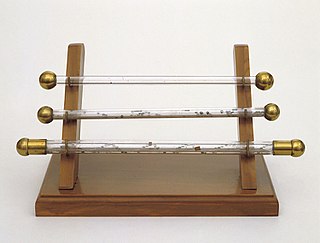
The luminous discharge tube is part of an electric machine.

The elastic and inelastic collisions apparatus is a large apparatus to study elastic and inelastic collisions.

The mechanical paradox is an apparatus for studying physical paradoxes. It consists of a trapezoidal veneered wooden frame with two brass rails, and a pair of brass cones joined at their bases by a wooden disk which rests on the rails. When the double cone is placed at the low end of the frame, it automatically starts to roll upward, giving the impression of escaping the universal law of the gravitational force.

The Reale Museo di Fisica e Storia Naturale was an Italian museum founded on 22 February 1775 in Florence that survived until 1878, when its collections were split up in various Florentine museums.

The Virgin Reliquaries are four 1434 panel paintings by Fra Giovanni Masi after drawings by Fra Angelico, intended as tabernacle-reliquaries for the Convent of Santa Maria Novella. One is in the Isabella Stewart Gardner Museum in Boston whilst the rest are in the Museo nazionale di San Marco in Florence.
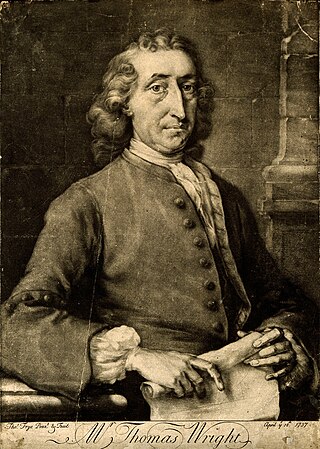
For other uses, see Thomas Wright (disambiguation).
